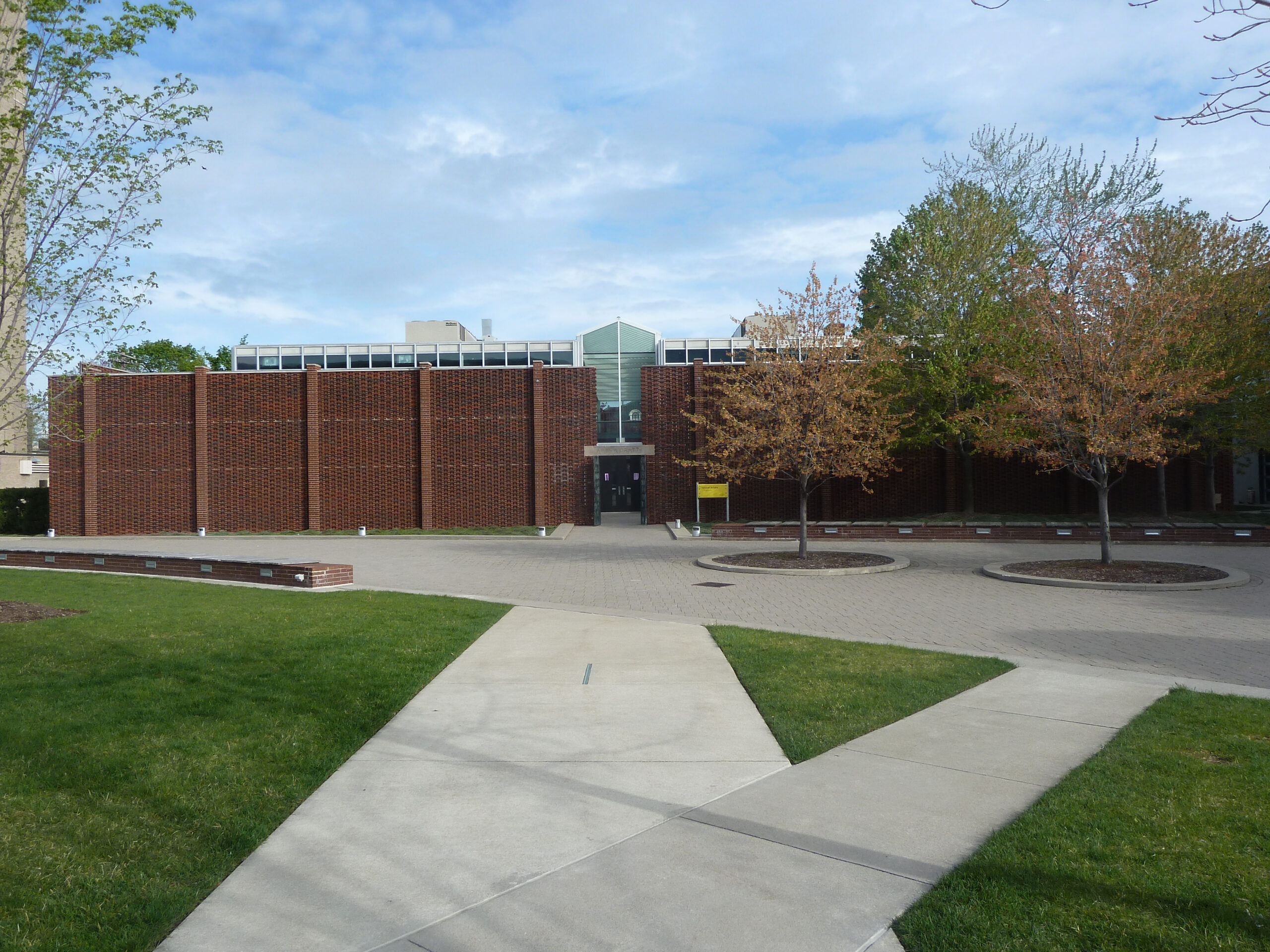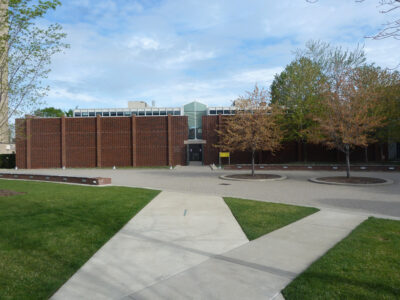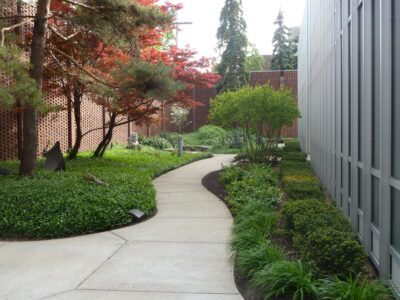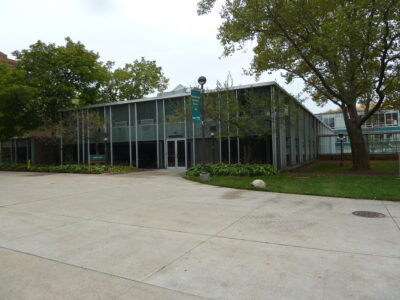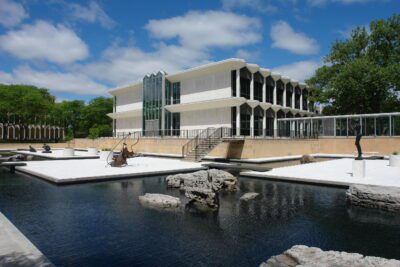A total of three Yamasaki-designed buildings were completed in Detroit in 1958: the Detroit Society of Arts and Crafts building, the McGregor Memorial Conference Center at Wayne State University, and the American Concrete Institute. Interestingly, all three of these buildings feature a similar floor plan, with rooms arranged symmetrically on either side of a high-ceilinged central corridor, lit by skylights above. In this building, the central atrium was intended for use as exhibition space, with artists studios to each side. Prior to the expansion of the Detroit Society of Arts and Crafts (now the College for Creative Studies), East Kirby Avenue continued east of John R., right in front of the new building. Imagine a street flanked by tall trees and turn-of-the-century brick and stone houses. It was in this setting that Yamasaki designed a facade almost entirely of glass. In order to soften what would otherwise be a harsh exterior, Yamasaki surrounded the building by a brick wall enclosing an interior garden space. This wall helped what was otherwise a starkly Modern building to harmonize with its surroundings. Its perforated pattern of red bricks provides textural interest that contrasts with the smooth surface of the building's glass and steel faade. The wall also shielded building occupants from the noise, traffic, and distractions outside, creating a more intimate space within.
Detroit's College for Creative Studies (CSS) arose out of an earlier institution, the Detroit Society of Arts and Crafts. The Society of Arts and Crafts commissioned Minoru Yamasaki to design this building, completed in 1958, which became the first building on the CCS campus. Inspired by the English Arts and Crafts movement, the Detroit Society of Arts and Crafts was founded in 1906 to promote ideals of beauty and skilled craftsmanship in an increasingly industrialized world. Its members included artists and artisans of all persuasions, including architects Albert Kahn, William Stratton, and Maxwell Grylls. Although the society was originally located in a brick and stucco cottage on Watson Street in Detroit's Brush Park, the organization moved to the Cultural Center in 1958 seeking expanded facilities and proximity to the city's other cultural institutions. The Society of Arts and Crafts began offering arts education programs in 1928 and by 1963 offered their first accredited bachelor's degree program in industrial design. The organization gradually evolved into what is now the College for Creative Studies. The original Yamasaki building was supplemented by others, including the Kresge-Ford Building immediately to the east. This building was completed in 1975 and designed by William Kessler and Associates, taking inspiration from the Japanese metabolist movement. Its physical form expresses a modular structure capable of evolving over time to meet changing demands.
(Text excerpted from the Detroit Lafayette/Elmwood Park Biking Tour script developed by the City of Detroit Historic Designation Advisory Board staff.)

